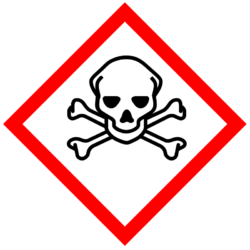Even More Reasons To Switch To An All-Natural Soap In 2020
In part 1
one this series, we discussed the
dangers associated with formaldehyde and parabens which are found in many soaps
sold from big corporate manufactures.
In this addition to the series we’ll be discussing two more harmful chemicals
found in many soaps, Sodium Laureth Sulfates and PEG Compounds.
Remember, the more informed you are as a
consumer, the better decisions you can make regarding the products you bring
into your home and life.
Chemical:
Sodium Laureth Sulfate (SLS)
Sodium Laureth Sulfate (SLS or SLES) is commonly
used in many personal care and cleaning products as a foaming agent, detergent,
and penetration enhancer.
A lot of people think a soap that produces a lot
of lather means it’s doing a better job at cleaning, this couldn’t be further
from the truth.
How much lather a soap produces actually has nothing to do with how well it’s cleaning your hands or body. (Source)
This is like when they talk about selling the sizzle instead of the steak! (And
in both cases there are healthier options!)
Big soap companies understand that appearances
matter more when it comes to buying psychology than having a high-quality
product does. Especially when they are banking on a market of unconscious and
uninformed consumers.
We want to help be part of the massive changes
we’re seeing in our society and wake people up to the harm these chemicals are
causing.
Sulfates are actually used primarily in soap
products more than any other product type, so be careful when reading your
labels for this one.
SLS is known as an irritant to the skin, and can cause eczema, dryness, coarse skin, and reddened skin after multiple uses. (Source)
It also can affect the eyes as an irritant and
can potentially cause eye damage to young children.
While it’s not a carcinogen on it’s own, studies
show it has the potential to combine with other chemicals and form a
carcinogenic compound. SLS has also been linked to organ toxicity, endocrine
disruption, and studies have found that residual levels of SLS stay in your
organs after using products with SLS on your body or scalp.
SLS is not really worth the trouble, especially
when a foaming effect can be produced naturally.
Here’s
what to look out for on your product labels to avoid SLS:
Sodium laureth/lauryl sulfate (SLS) and sodium
lauryl ether sulphate (SLES).
(Source)
Chemical:
Polyethylene Glycol (PEG compounds)
Polyethylene Glycol, commonly known as PEG
compounds or PEGs, are widely used in cosmetic products as thickeners,
softeners, penetration enhancers, and moisture-carriers.
PEGs are not a single chemical but rather a group
of polymers and compounds that have bonded together.
Typically they are listed in ingredients followed
by a number to denote the approximate molecular weight of the compound like
PEG-6, PEG-8, and so on. The lower the number the easier it is for the
molecular to penetrate your skin.
(Source)
They’re not necessarily considered dangerous by
themselves, but they can become contaminated in the manufacturing process with
two compounds which do have links to cancers, ethylene oxide (used to
manufacture mustard gas), and 1,4-dioxane.
Both ethylene oxide and 1,4 dioxane are harmful
to the skin and are strong pollutants.
(Source)
Ethylene oxide (found in PEG-4, PEG-7,
PEG4-dilaurate, and PEG 100) is highly toxic even in small amounts. Exposure to
Ethylene oxide has been linked to increased cases of leukemia as well as other
types of cancer.
(Source)
1,4-dioxane (found in PEG-6, PEG-8, PEG-32,
PEG-75, PEG-150, PEG-14M, and PEG-20M) may combine with atmospheric oxygen, AKA
the air, to form explosive peroxides. Not really a substance you want to rub
all over your body, right?
Other contaminants that PEGs may carry are
polycyclic aromatic compounds, and heavy metals such as lead, iron, cobalt,
nickel, cadmium, arsenic.
Some manufactures do make attempts to remove
these harmful contaminants through vacuum stripping but not all of them do so.
This is another case where you don’t need to
expose yourself to risk, especially when natural alternatives like vegetable
glycerin exist and work just as well.
Here’s
what to look out for on your product labels to avoid PEGs:
Polyethylene Glycol, PEG-4, PEG-7, PEG4-dilaurate,
and PEG 100 PEG-6, PEG-8, PEG-100, PEG-32,
PEG-75, PEG-150, PEG-14M, and PEG-20M)
Try Go
Peaceful Living’s All Natural USDA Organic Soaps
You won’t find either of these harmful chemical
compounds in Go Peaceful Living’s soaps. All our products are certified USDA
organic and make from natural plant extracts and essential oils.
There really is no need to continue to use soaps
full of chemical disinfectants and preservatives now that naturally sourced
alternatives are readily available.
We’re currently offering our soaps in three great
scents, Mint, Citrus, and Lavender.
We’ll come back in part 3 of this series to
discuss more unhealthy chemicals commonly found in so many of the products you
find in your average drug store or pharmacy.

